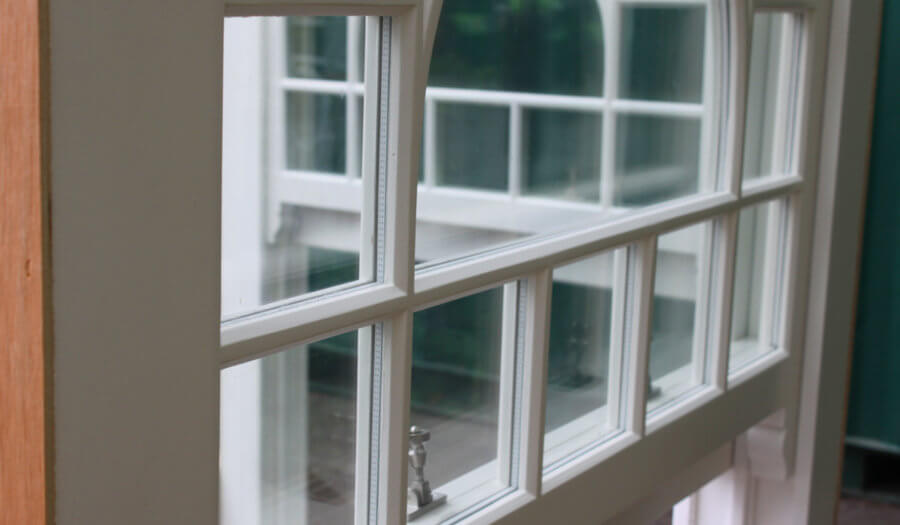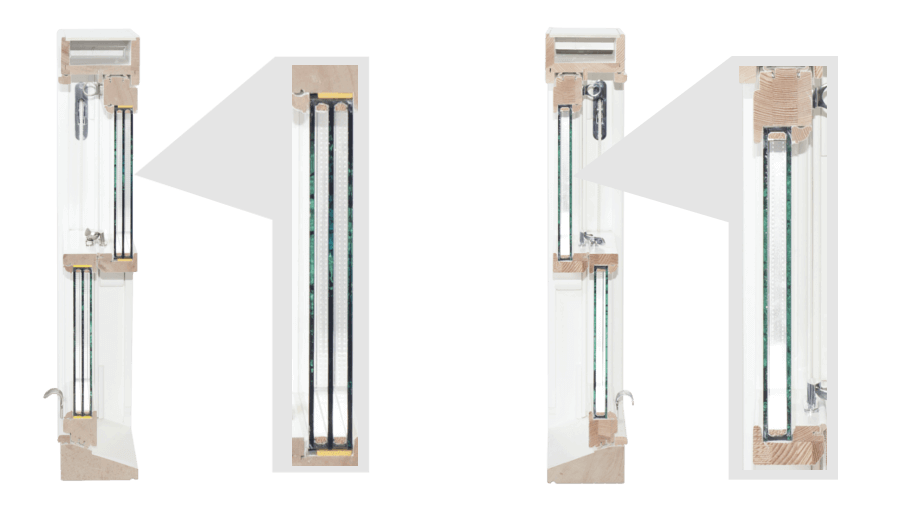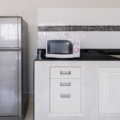Aesthetically pleasing and simple in design, sash windows continue to be one of the most popular choices with British house owners. We love them, we admire their elegance, and we invest thousands in their renovation. But how much do we know about these classic beauties?
Who invented sash windows?
The invention of sash windows is often credited to Robert Hooke. Others believe they came from Holland in the 17th century
The oldest surviving example of sash windows was installed in England in the 1670s. You would think that by now we should know who stands behind this great invention. However, the origins of sash windows have been the subject of investigation till these days. The invention of sash windows is often credited to Robert Hooke. Others believe they came from Holland in the 17th century. Another school of thought suggests that sash windows weren’t invented, but they simply developed from horizontal sliding sash, known as Yorkshire sash. Among a variety of answers it seems there is one thing we all agree about – whoever did invent sash windows, he did a great job!
How wide are sash windows?
Standard sash windows measure approximately 4 feet in width. As such they were used mainly in late Victorian suburban houses
Standard sash windows measure approximately 4 feet (1.2m) in width, and as such they were used mainly in late Edwardian and Victorian suburban houses. However, the history teaches us that Englishmen have never liked to abide by rules. Throughout England we can find units that are literally of any size, used – among others – in traditional English pubs. Nowadays we don’t follow standards either. Almost any joinery company offers sash windows manufactured to bespoke sizes, from windows that are as narrow as 405mm to ones that are almost 2 metres in width. It really depends on a type of sash window you require for your house.
How to paint sash windows?
The secret of painting sash windows lies in moving the sashes as you work in order to expose unpainted areas
Painting sash windows is not an easy task, and it is crucial that you do it in the right way and in the right order. First and foremost, you need to prepare windows by removing all sash furniture such as locks and handles. Brush down (or even hoover!) the windows to make sure all the dust is removed. Now, you can move on to painting. The secret lies in moving the sashes as you work. You can start with pushing the bottom sash as high as it goes and pulling the top sash down. Paint the mullions in both sashes, face of the frame on the lower sash and the underside of the rebate. Once done, push the top sash back up, but not all the way into the rebate to avoid painted surface meeting. Paint mullions and frame faces you couldn’t reach before. Finish it off with painting the cill and frame casing. Et voila!
What are barn sash windows?
Barn sash windows are one of the simplest windows and the most common choice for sheds, barns or cabins
Barn sash windows are one of the simplest windows you can get. They consist of wood frames, single-glaze glass panes and classic dividers for extra charm. They can be installed sideways or upright, and hinged to open up, making the design very comfortable and easy to use. As such they are the most common choice for sheds, barns or cabins, as they are high-quality, maintenance-free units. Nowadays many manufacturers of barn sash windows try to their keep traditional appearance and at the same time incorporate modern assembly methods so that the windows are easy to maintain for the end user.
Are sash windows secure?
If fitted with a key-operated lock and a pair of stops, sash windows are as secure as a window can get
Sash windows are often associated with old buildings and with the times when health and safety regulations weren’t taken as seriously as they are now. Even though original sash windows did raise safety concerns, nowadays making sure your windows are secure and burglar proof is very easy. First of all, sash windows can be fitted with a key-operated lock to prevent opening from the outside. Mind you, clasps, bars or fasteners are not considered locks. For extra security sash windows can be fitted with a pair of sash stops, which will not only prevent anyone from forcing the window up, but they can also be used to lock the window open for extra ventilation.
Double or triple glazed sash windows?
The cost of triple-glazing is higher than double-glazing, yet the improved U-value is not very large
Sash double-glazed windows are secure, energy-efficient, and rattle-free, with a U-value of 3 or as low as 1.6 if fitted with modern double-glazing. Nowadays, however, the focus is on reducing noise and increasing efficiency as much as possible, and so we are bit by bit encouraged to switch to sash windows with triple-glazing. Their U-value can be as low as 0.8, but – to be honest – the additional energy we are saving is really minuscule. Also, to get such a low U-value, you would have to insulate the window frame itself, and use much more expensive manufacturing techniques. In other words, the cost of triple-glazing is higher than double-glazing, yet the improved U-value is not very large.
What are Gregorian sash windows?
Georgian sash windows are characterised by the classical “six over six” arrangement of panes on each sash
Georgian-style sash windows, coming from Georgian era, are mainly characterised by proportion, symmetry, and – above all – elegance! They usually have the classical “six over six” arrangement, which is three panes across by two panes up on each sash. Another feature we associate with Georgian sash windows is the use of a narrow glazing bar, the need for which was first articulated by Isaac Ware in his Complete Body of Architecture: “Those thick bars we used to employ hurt the eye, and obstruct a great deal of light; the intent is that as much glass should be seen, and as nearly in a continued body as possible.” Last but not least, the upper and the lower sashes of Georgian-style windows slide vertically in separate groves.
How to insulate sash windows?
There is a number of ways to insulate sash windows, including fitting draught-proofing strips, hanging heavy curtains or adding a second sheet of glass
Sash windows can be draughty, especially the old and weathered down ones. The main source of heat loss is through the gaps in window frames. Luckily, there is a number of ways to insulate sash windows and make them more energy efficient. The cheapest way is to fit draught-proofing strips, which could reduce air infiltration by nearly 90%! Some also suggest hanging heavy curtains for better results. Another way is to add a second sheet of glass to window frames (secondary glazing), which could cut heat loss by 60% and would allow you retain original windows without the need for damaging alterations. Some also resort to double-glazing. This, however, means losing the original windows and damaging the character of your property.
Which locks are best for sash windows?
One of the best ways to secure sash windows is to fit them with a pair of key-operated dual screws
Securing sash windows to insurance standards means fitting them with locks, even if they are painted shut. You should pay special attention to windows on the ground floor and easily accessible windows on the upper floor, as they are most vulnerable to attacks. One of the best ways to secure sash windows is a key-operated dual screw, which is a barrel-type lock. The bolt is screwed through an internally threaded barrel fitted in the top of the lower sash into a hole in the bottom of the upper sash. It’s advised these locks should be fitted in pairs. For extra security you can also use pairs of high-security sash stops. Not only do they prevent the window from being forced up, but they can also be used to lock it open for ventilation.
Which material is better for sash windows? Timber o uPVC?
Both timber and uPVC sash windows have their prons and cons. The final decision is often down to personal preferences and comfort
In order to answer this question, it is best to have a look at all the pros and cons of both timber and uPVC sash windows. The first thing to consider is the matter of heat loss. U-value of a new sash timber window with double-glazing is around 1.7, whereas that of a new uPVC sash window is 1.6. The difference is really insignificant. Another aspect to look at is a lifespan. If correctly maintained, timber sash windows can last for ages. To compare, the lifetime of uPVC windows is maximum 35 years and they are known to discolour as a result of UV. Finally, let’s consider the look. Properties with wooden sash windows are said to look better and sell for more. However, good uPVC windows look very similar to timber windows and they cost less. All in all, it is really down to personal preferences and comfort.





